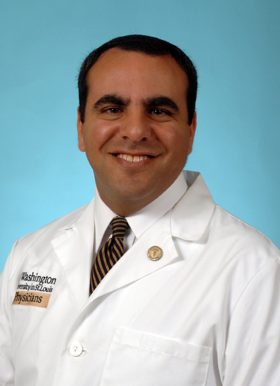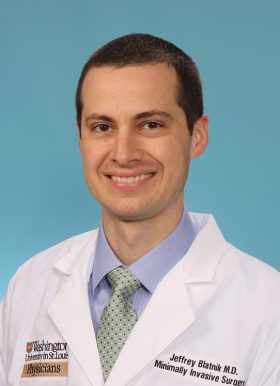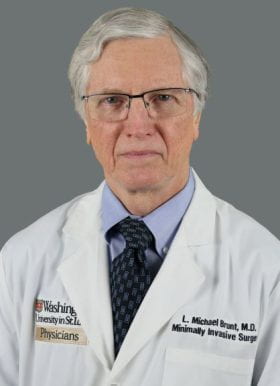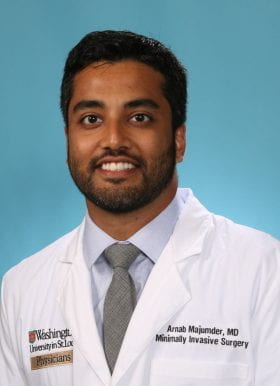Laparoscopic procedures performed by Washington University minimally invasive surgeons
For many surgical procedures, the method of choice has shifted from traditional open surgery to the use of minimally invasive surgery. Minimally invasive procedures usually result in less pain, less scarring and quicker recovery time for the patient, as well as reduced health-care costs. This trend is predicted to continue as more and more high-volume surgeries performed in the United States are done via laparoscopic techniques.
What is minimally invasive surgery?
Minimally invasive surgery encompasses a number of techniques designed to reduce the physical trauma associated with traditional surgical procedures. Instead of making a single large incision, the surgeon creates several small incisions and places a laparoscope – a scope with a light and camera – through one of the incisions. This allows the surgeon to view the anatomy. The surgeon performs the operation working with long instruments placed through small tubes in the other incisions.
Since the smaller incisions heal faster, patients who are treated with this surgical technique usually have fewer complications, a shorter hospital stay and a much faster recovery than with traditional open surgery. Minimally invasive surgery is also referred to as minimal access surgery or laparoscopic surgery.
What procedures do Washington University minimally invasive surgeons perform?
A number of minimally invasive surgical procedures are performed by Washington University minimally invasive surgeons, including:
- Laparoscopic adrenalectomy (adrenal gland removal)
- Laparoscopic cholecystectomy (gallbladder removal)
- Laparoscopic Heller myotomy for treatment of achalasia (swallowing disorder)
- Laparoscopic hernia repair for inguinal and incisional hernias
- Laparoscopic Nissen fundoplication (to stop gastroesophageal reflux)
Surgical weight management:
Do other Washington University surgeons perform minimally invasive operations?
Washington University urologists, colorectal surgeons, pediatric surgeons and cardiothoracic surgeons also perform minimally invasive procedures. These include:
- Kidney stone treatment
- Laparoscopic colon cancer surgery
- Laparoscopic partial nephrectomy (kidney removal)
- Laparoscopic radical nephrectomy (kidney removal)
- Laparoscopic prostatectomy (removal of prostate)
- Robotic-assisted prostatectomy (removal of prostate)
- Laparoscopic retroperitoneal lymph node dissection (RPLND) for testicular cancer
- Laparoscopic surgery for conditions of the liver, pancreas and stomach
- Minimally invasive approach to Cox Maze procedure (for heart arrhythmia)
- Minimally invasive pediatric surgery
For a patient appointment with a minimally invasive surgeon, please call (314) 454-8877.
Minimally invasive surgeons






